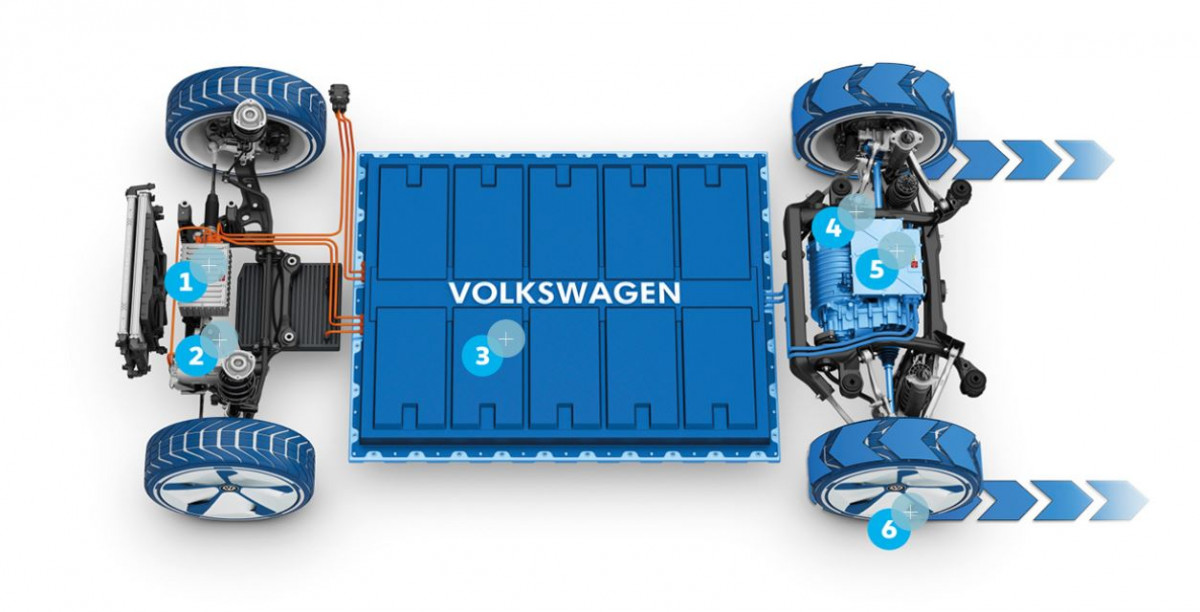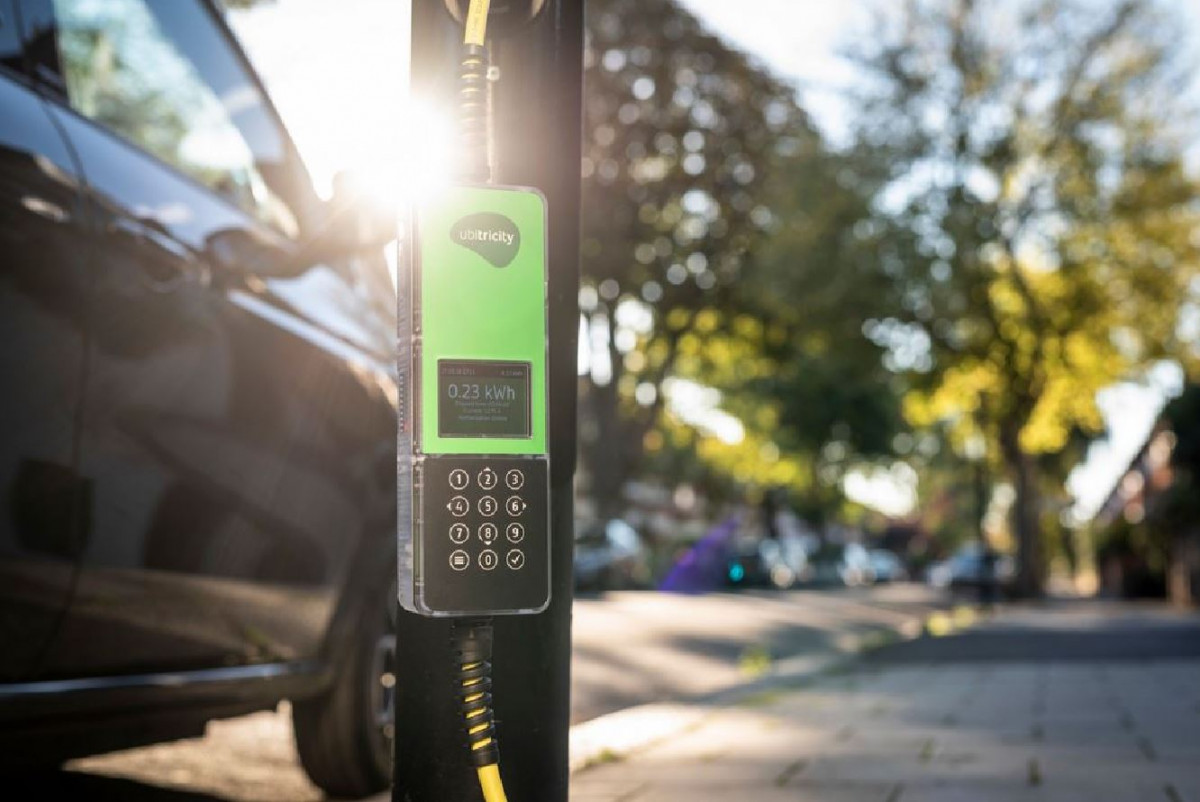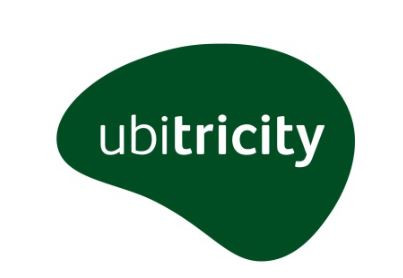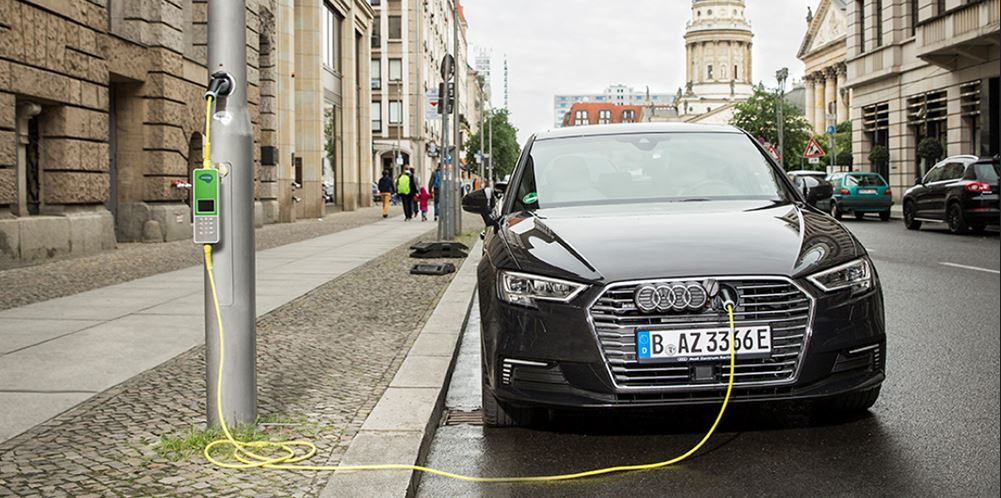Mobility start-up ubitricity wants to revolutionise e-car charging
Company profile
- Berlin start-up ubitricity has developed physical and digital infrastructure that allows the upgrade of existing street lights into e-car charging stations at low cost. The system, which includes billing systems and e-car charging cables, also allows users to charge their vehicles with their own electricity – for example from PV panels on their roof.
- The company was founded in 2008 and has grown to around 50 employees. It has already taken an order in London and now plans to roll out its technology in Berlin and New York, where it won the NYCx Climate Action Challenge Tech Competition in 2018. New York Mayor Bill de Blasio's office has said ubitricity’s technology could be instrumental in helping the city achieve its climate targets while simplifying the needs of electric vehicle users and future adopters.
- In its latest financing round in March 2019, ubitricity collected 20 million euros and partnered with carmaker Honda.
- German industrial conglomerate Siemens and French utility EdF are among its investors, while early clients include municipal utilities and ride-share services emmy and CleverShuttle.
Why ubitricity matters
- Like many other countries, Germany is struggling to cut emissions in the transport sector. Most experts consider the roll-out of electric cars central to achieving that objective. But progress has been relatively slow, partly due to concerns about insufficient charging options. Ubitricity says its technology can drive the mass deployment of electric cars, because it would allow drivers to charge on their block or at the workplace at relatively low cost.
- Ubitricity’s business model illustrates several important energy transition trends: Increasing digitalisation and decentralisation, the use of renewable power in other sectors such as transport, and the use of car batteries to stabilise the grid and manage electrity demand.
What ubitricity says
Clean Energy Wire spoke with ubitricity’s founder and CEO, Frank Pawlitschek, who is also a member of the government’s task force for clean mobility.
Clean Energy Wire: How would you evaluate the current progress of the energy transition in the transport sector?
Frank Pawlitschek: I would like to focus on the shift to electric cars, because the whole subject of mobility is so broad and includes public transport, sharing concepts, bicycles and so on. The transition to electric propulsion systems was long neglected by German carmakers, but that changed suddenly in 2017. The topic is no longer a fig leaf – the companies are now fully committed. This topic remains undercovered in the media, given the tremendous upheaval unfolding within the carmakers.
I went to the Geneva car show recently, and the overall impression I took away was this: there are only two types of carmakers left. On the one hand, there are those that build super-fast and large cars with six exhaust pipes, who insist that the combustion engine is an inherent part of their brand. And then there are the rest, meaning all the others. I didn’t see a single keynote speech by a major carmaker that didn’t feature battery-electric vehicles as the central topic.
But when will we see electric mobility’s true breakthrough?
We are nearing the breakthrough. The gap is narrowing fast between what the average car buyer is looking for, and what battery-electric cars have to offer for a reasonable price. But the necessary cars are still not available. Battery system costs will have to fall further, to the point that buying and running an electric car essentially costs the same as a combustion model. One important issue: electric cars will reach this cost parity much sooner in countries where electricity is cheaper than in Germany.
But as noted, the transformation within the companies has now begun in earnest, which is a clear signal for a breakthrough. Huge amounts of money are being invested, led by VW with their [underlying platform for electric cars called] Modular Electrification Toolkit (MEB), which will cover all brands and models. This will result in huge production numbers, and therefore in enormous scaling effects as well.

We will get a further boost from the regulatory framework. Our new investor Honda has just announced it will exclusively sell pure electric cars in Europe from 2025. That move illustrates that it's become increasingly clear that carmakers will no longer be allowed to sell combustion-engine cars in Europe, starting at some point in the 2030s, because of local pollution and climate issues. This means there are only ten years left, which is an extremely short period of time if you consider the entire car industry, grown over many decades, with a huge number of employees and production facilities.
From a consumer perspective, we’ll see a breakthrough – meaning most car buyers will consider an electric car very seriously – in 2025 at the very latest. Electric vehicle sales will rise much more quickly in the coming years, but they will mainly be driven by early adopters until 2022. Then, you'll finally get a real spillover effect, and the shift will happen much more quickly than many people expect today. Buyers walking into a showroom in 2025 will ask themselves: ‘Hold on a minute. If we buy a petrol or diesel car today, we will never be able to sell it in 5 or 10 years.’ At that point, no one will want to buy a conventional car anymore, even if they still have to pay a little extra for the electric model.
There will come a point where you don’t even need to ban combustion engine sales, because large carmakers will definitely not be able to run both technologies on a large scale in parallel. That’s already the largest risk for the incumbents, because in contrast to all those Chinese and Californian newcomers, they have to manage the transition with their existing employees, production facilities, processes and so on – an incredibly daunting task.
Let’s zoom in a little on your area of expertise – charging infrastructure. Do you see much progress here?
The main hurdle for the roll-out of charging infrastructure is that no one has a commercial interest in it, because there is simply no business case. There probably isn’t a single charging point in Germany – or even in the world – that is really profitable. Installing a standard charging point with a maximum capacity of 22 kilowatts will cost around 10,000 to 15,000 euros, plus around 200 euros per month for maintenance. Given those numbers, you will never make a profit. RWE said a few years ago that even a busy charging point would have to charge 1,80 euros per kWh to make it profitable – but of course, no one would pay that given it’s around six times what you pay at home. That leaves only two options – either you deploy the really expensive technology anyway and just smother it with subsidies, or you have to opt for a more clever solution.
We have to differentiate between different use cases. When and how will we charge cars in the future? Most people approach this problem with today’s ‘charging infrastructure’ in mind – i.e. petrol stations. They ask: ‘When I’m on the road, where can I charge my car when I need to?’ The very question defines progress in terms of what we call ad-hoc charging infrastructure – you happen to drive by and want to charge as quickly as possible. This scenario is deeply embedded in peoples’ minds – even among those in charge of regulation, and even in the car industry.
But in reality, you have the electric infrastructure already available at home – your power connection. When cars are parked for longer periods of time – overnight or at work – they can be charged at relatively small capacities. It will happen relatively rarely that you will need to charge your e-car quickly at high capacity. And this is exactly why ubitricity focuses on charging in a private environment, which also includes your street if you don’t have a garage, and your workplace.
It will happen relatively rarely that you will need to charge your e-car quickly at high capacity.
We can easily transform the average amount of time a car is parked -- 22 to 23 hours per day -- into charging time. There has been some movement in this regard, but mainly concerning the easiest use case: a private car in a private garage with a private power connection. But that scenario covers less than 50 percent of car owners. Matters are much more complicated for the rest - in apartment buildings, for example. Complex and cumbersome regulation makes the installation of charging points there extremely difficult.
For people parking in residential streets at night, there is currently no sensible solution at all, except what ubitricity has to offer, because in these neighbourhoods there is no demand for ad-hoc charging during the day.
This is where our business case comes into play. We always use as much of the existing infrastructure as possible, and only upgrade it a little bit to a charging point, for example in the form of a street light. Just to be clear: Our technology never aims to transform a street light into an ad-hoc charging point. The available capacity is much too small for a spontaneous, ‘I need to charge my car quickly’ scenario. We want to offer private individuals that park their car in the street at night a financially viable option. The maintenance costs are being transferred to the user via the billing system, but in return she can choose her power contract.
There is a lot of investment and public financial support going into ad-hoc charging points with high capacities at the moment, which is a good thing because people are still worried about being stranded in their e-cars. But high-capacity chargers can easily cost hundreds of thousands of euros because of the necessary power grid upgrades, which means charging your car there will have to cost a lot of money. It already becomes clear that in the future, charging quickly will be expensive, while charging slowly will be cheap.
What regulatory change do you consider the most pressing for your company, and the transition to green mobility in general?
Let me illustrate our regulatory problems with an analogy. Imagine a world of landline telephones, where you have a lot of investment into phone booths, so users only need to bring 20 cents if they need to make a call. Now you want to introduce a new invention called mobile phones. The relevant legislation is called ‘telephone booth law’ and it defines phones as ‘communication devices with a coin slot’. You’re in serious trouble, because your invention is not a phone by the definition of the law! That might sound funny, but for us, this is not funny at all. Innovations are often killed by regulation that was written with an entirely different use case in mind.
The German law covering charging [‘Ladesäulenverordnung’] was clearly written with petrol pumps in mind, instead of questioning whether a new technology might be called for. Ubitricity doesn’t approach the charging issue from a network perspective, but from a mobile user – i.e. car – perspective. We don’t bet on telephone booths, but on mobile infrastructure. Cars are already equipped with much of the technology built into charging points – for billing, communication, payment authorisation and so on. We don’t need to duplicate all that technology. The whole idea of ubitricity is to leave the fixed infrastructure as simple as possible, and to simply add the necessary technology to the car.
After a long and strenuous fight, we just managed to get an exception into the regulation which states that chargers with a small capacity do not need to be super smart. Because that’s the usual definition: They must feature all this expensive technology so you can unlock it using your mobile phone. It didn’t cross anybody’s mind that the technology could also be in the car.
Not only us, but many others are also at risk of getting into serious trouble regarding metering and commercial data processing. We’ve been trying to introduce smart metering in Germany for ten years, but the laws are so inflexible down to the minutest details. That leaves no room for technologies that are urgently needed today, like using car batteries for intelligent demand management to stabilise the grid, which should produce financial benefits for car owners. In principle, it’s no problem to charge millions of electric cars with the existing grid infrastructure. But it won’t work if all cars start charging blindly as soon as they are plugged in – this process will have to be steered intelligently. But that's virtually impossible to realise today, because of the extremely complex regulations covering metering requirements. This is not only a problem for ubitricity, but for many other innovative business models as well. We urgently need to inject flexibility here and open it up for different technologies. It puts a massive break on the entire project of digitalising the energy transition. With the existing regulation, we are at risk of making the energy and transport transition much more difficult.
Will ubitricity become superfluous once the technology needed for charging migrates into the car?
At first glance, many people think our business model is about hardware, because we offer cables, meters, sockets and so on. But we only had to develop and build it because it wasn’t available. What we really stand for is enabling the possibility of choosing a power provider for your car, as you do for your household. Suppliers could sell their electricity much cheaper if they know that a consumer – and in our case, that’s a car – will only use it between 1 and 3 o’clock in the morning, when wind generation is strong and demand low. So why should the power price for a car be the same as for a household, where you don’t have that option to steer demand.
What we really stand for is enabling the possibility of choosing a power provider for your car, as you do for your household.
Fundamentally, ubitricity has pushed process innovation in the energy sector – and for a long time, people laughed and even swore at us because they said a car can’t have a power contract, because it moves from one electricity distribution network to another. Conventional power contracts are bound to one particular meter in one particular location. We had to show that it's possible to overcome this issue with digitalisation and virtualisation. So our business model really is to build a large data platform, and to enrich the data to enable new energy services such as mobile electricity. In that regard, it doesn’t matter whether the meter is in the cable or in the car, or becomes entirely virtual. We’re essentially a software company.
Of course, rolling out our hardware infrastructure currently plays a central role for development. But at some point, it will become irrelevant for us, because the aim is data processing, and enabling mobile electricity. We are the platform where mobile electricity providers can offer their services.
What are the next milestones for your company?
Honda’s involvement was a fantastic milestone for us. This year, we face two more: we will roll out our technology in Berlin in a pilot project, after it’s been used successfully for years in London. The second milestone is a project in New York, where we won an innovation price last year. In a small pilot project, we want to show that the technology works, not only in Europe. Next year, we also want to start the roll-out of our street light technology in France, in cooperation with our investor EDF.
What do start-ups require to prosper? Does Germany offer the right environment?
Founding a start-up is no longer the difficult part in Germany, but growth is. We now have a fairly strong scene of early seed and angel investors, and it’s also not too difficult to get money once you’ve reached a fair size. But financing growth in the interim period can be tricky.
In Germany, and in Europe more generally, it is also difficult to organise financing with a volume that allows you to think big. We have a clear disadvantage in comparison to the US, where people say ‘I know that certain business models – especially platforms – can only work with a critical number of users that create a strong pull factor.’ Reaching this critical size requires huge investments, sometimes over many years – just think of Uber in the transport sector or Amazon in retail. You simply don’t find the willingness - or the necessary mindset – to invest that sort of money here. In Germany, people want to invest as little money as possible in a safe business case and reach break-even as quickly as possible. But the government has understood the problem and is trying to do something about it. We’re on the right track, even if it is taking a little longer as usual. I guess it’s part of our mentality to approach the issue on a theoretical level first.
I see another interesting development among Mittelstand firms – conventional small and medium-sized companies that are often family-owned. Many of those firms have woken up and realised that cooperations with smaller partners and early investments offer a lot of innovative potential that is not accessible for them otherwise. Even large industrial companies now realise it can be worth to enter the field with early investments.





